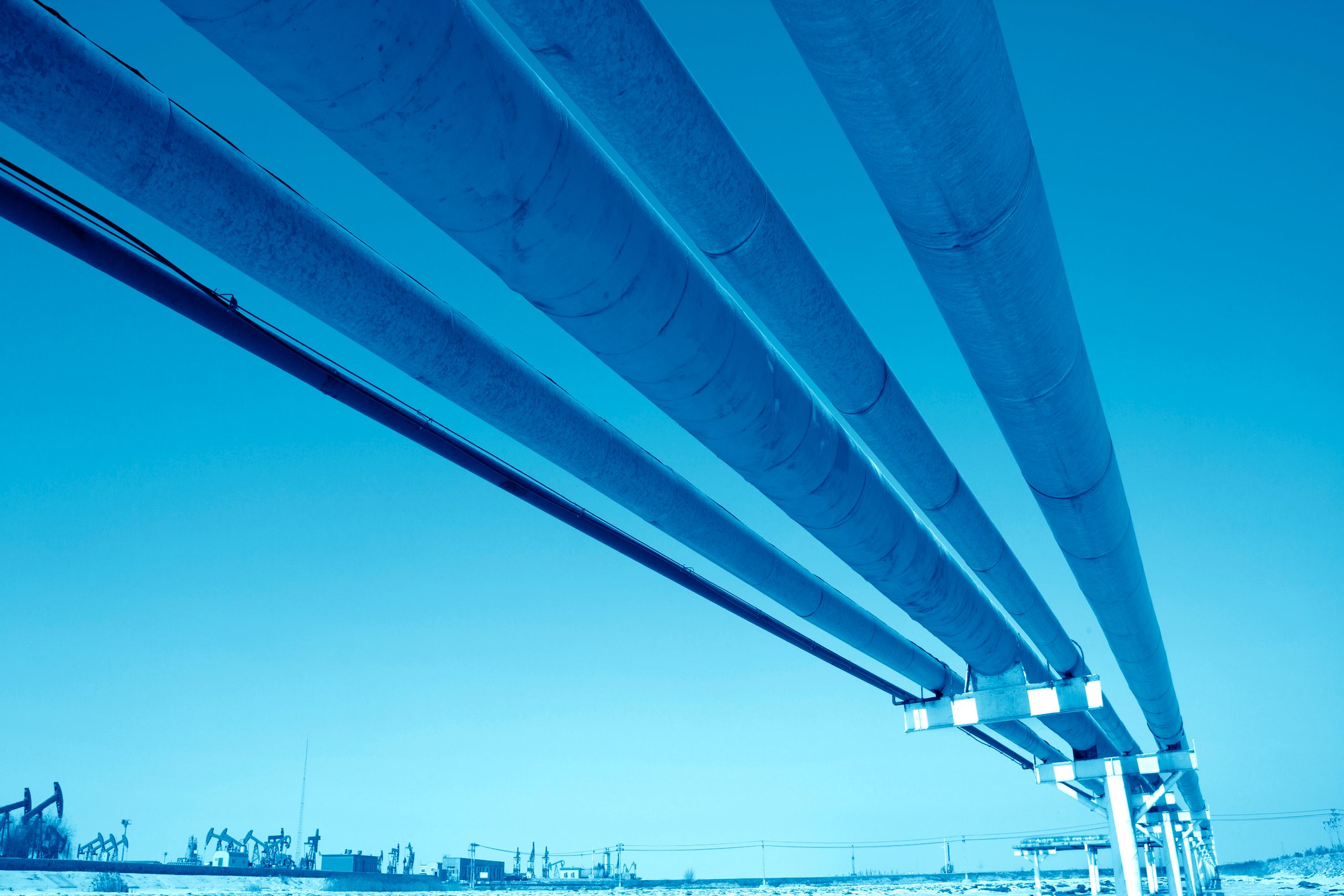In 2015, Enbridge Energy Partners (EEP +0.00%) put together strong earnings results, which have led to rather predictable results. This past quarter wasn't too different. However, the company's outlook for 2016 suggests that the low oil and gas price environment is starting to take its toll. Let's take a quick snapshot of the company's results, and what the company expects for the coming year.
Enbridge Energy Partner's quarter: By the numbers
| Results (in millions, except per share) | Q4 2015 | Q3 2015 | Q4 2014 |
| Revenue | $1,136 | $1,267 | $2,017 |
| Adjusted EBITDA | $450.7 | $460.7 | $443.3 |
| Net income attributable to Enbridge Energy Partners | ($0.14) | $0.07 | $0.51 |
Source: Enbridge Energy Partners' earnings release.
The important number to focus on here is Adjusted EBITDA. A pipeline company's revenue isn't a great indicator, because typically lower revenue goes hand in hand with lower cost of sales. Also, net income accounts for heavy non-cash and one-time charges. On an adjusted EBITDA level, it's good to see the company beat its year-over-year numbers, but higher interest expenses and other cash expenses mean that it's not as robust as some investors might hope.
On a distributable cash-flow basis -- the big measure for a master limited partnership -- Enbridge's fourth-quarter results were pretty much flat from last year. In a down market, that sounds OK; but the payout is higher than last year, so the cash coverage of that disitribution was not as robust as in prior quarters.
What happened with Enbridge Energy Partners this quarter
- Total crude oil and liquids volumes increased by 9.5% compared to 2014, to 2.88 million barrels per day.
- The company completed the reversal and expansion of its line 9B to Eastern Canada, and completed its Southern Access Extension. Completing these two projects meant Enbridge Energy Partners brought $1.6 billion in new assets online in 2015.
- Some of the gains from new assets coming online were offset from low utilization rates at some of its other assets, such as its crude oil gathering pipelines, and rail services out of the Bakken shale in North Dakota.
- Distribution coverage ratio for all of 2015 came in at 1.11 times, or 0.92 times after including a paid-in-kind distribution in the year.
- Management's fourth quarter was held at $0.583 per unit. Considering the company expects distributable cash flow to be lower in 2016, chances are the distribution will remain at these levels in 2016.
What management had to say
While the numbers from Enbridge Energy Partners were a little off this time last year, CEO Mark Maki had some pretty positive things to say about the performance this year, and the expectations for 2016.
With our liquids pipeline systems' premier connectivity to North American refining centers, our competitive transportation rates and our enhanced market access program, we expect demand for our pipeline systems to remain strong. Enbridge's recent new market access projects, which entered service during the fourth quarter, specifically the reversal and expansion of Line 9B to Eastern Canada and the Southern Access Extension into the Patoka, IL markets increased the Partnership's fourth quarter utilization and is expected to continue into 2016.
Demand for pipeline takeaway capacity out of Western Canada and the Bakken regions is anticipated to remain strong, as both basins currently have inadequate pipeline takeaway capacity. Additionally, crude oil supply growth from Western Canada is expected to increase as recently completed oil sands expansion projects and those currently under construction are expected to ramp-up through the end of the decade. Together, this provides us with a high level of confidence in continued high utilization of the Partnership's liquids pipeline systems.
Looking forward
One aspect that does look a bit concerning in Enbridge's guidance for the coming year is that management is guiding for its distributable cash flow to be lower in 2016 as a result of higher interest expenses. Its distribution coverage ratio for the entire year is expected to be in the range of 0.8-0.9 times, which is a territory that no company wants to tread for long. Enbridge Energy Partners does not anticipate needing to access the equity markets to raise capital in 2016, as 2016 capital spending is going to be a more modest $900 million.
One year of a low distribution coverage ratio like that isn't a death sentence, but it is definitely a major red flag that should keep investors interested in seeing Enbridge's prospects improve by the end of the year. Investors should keep a close eye on how the company plans to address this before the end of the year.






